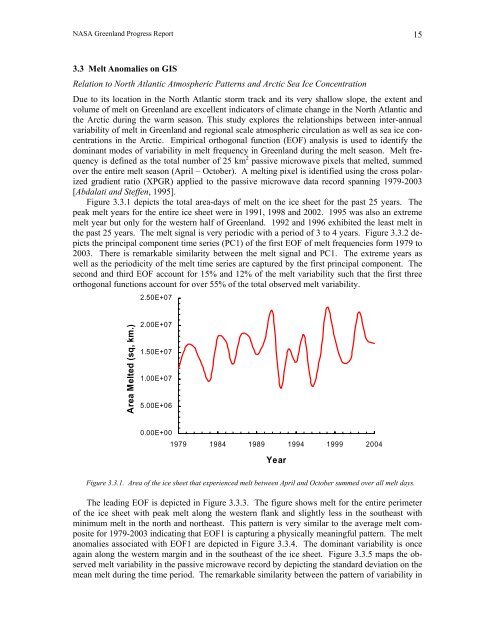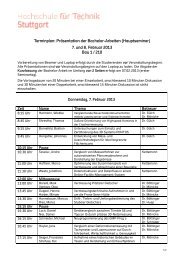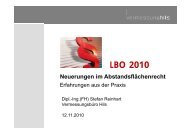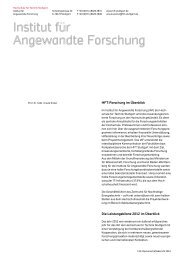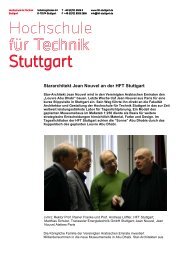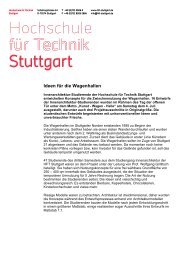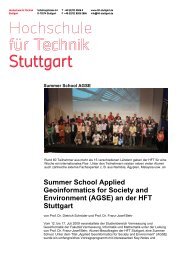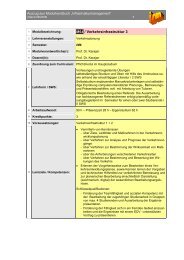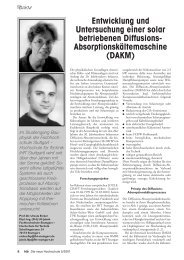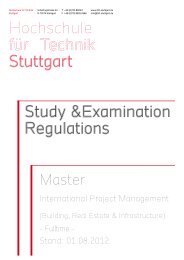greenland climate network (gc-net) - HFT Stuttgart
greenland climate network (gc-net) - HFT Stuttgart
greenland climate network (gc-net) - HFT Stuttgart
You also want an ePaper? Increase the reach of your titles
YUMPU automatically turns print PDFs into web optimized ePapers that Google loves.
NASA Greenland Progress Report 15<br />
3.3 Melt Anomalies on GIS<br />
Relation to North Atlantic Atmospheric Patterns and Arctic Sea Ice Concentration<br />
Due to its location in the North Atlantic storm track and its very shallow slope, the extent and<br />
volume of melt on Greenland are excellent indicators of <strong>climate</strong> change in the North Atlantic and<br />
the Arctic during the warm season. This study explores the relationships between inter-annual<br />
variability of melt in Greenland and regional scale atmospheric circulation as well as sea ice concentrations<br />
in the Arctic. Empirical orthogonal function (EOF) analysis is used to identify the<br />
dominant modes of variability in melt frequency in Greenland during the melt season. Melt frequency<br />
is defined as the total number of 25 km 2 passive microwave pixels that melted, summed<br />
over the entire melt season (April – October). A melting pixel is identified using the cross polarized<br />
gradient ratio (XPGR) applied to the passive microwave data record spanning 1979-2003<br />
[Abdalati and Steffen, 1995].<br />
Figure 3.3.1 depicts the total area-days of melt on the ice sheet for the past 25 years. The<br />
peak melt years for the entire ice sheet were in 1991, 1998 and 2002. 1995 was also an extreme<br />
melt year but only for the western half of Greenland. 1992 and 1996 exhibited the least melt in<br />
the past 25 years. The melt signal is very periodic with a period of 3 to 4 years. Figure 3.3.2 depicts<br />
the principal component time series (PC1) of the first EOF of melt frequencies form 1979 to<br />
2003. There is remarkable similarity between the melt signal and PC1. The extreme years as<br />
well as the periodicity of the melt time series are captured by the first principal component. The<br />
second and third EOF account for 15% and 12% of the melt variability such that the first three<br />
orthogonal functions account for over 55% of the total observed melt variability.<br />
2.50E+07<br />
Area Melted (sq, km.)<br />
2.00E+07<br />
1.50E+07<br />
1.00E+07<br />
5.00E+06<br />
0.00E+00<br />
1979 1984 1989 1994 1999 2004<br />
Year<br />
Figure 3.3.1. Area of the ice sheet that experienced melt between April and October summed over all melt days.<br />
The leading EOF is depicted in Figure 3.3.3. The figure shows melt for the entire perimeter<br />
of the ice sheet with peak melt along the western flank and slightly less in the southeast with<br />
minimum melt in the north and northeast. This pattern is very similar to the average melt composite<br />
for 1979-2003 indicating that EOF1 is capturing a physically meaningful pattern. The melt<br />
anomalies associated with EOF1 are depicted in Figure 3.3.4. The dominant variability is once<br />
again along the western margin and in the southeast of the ice sheet. Figure 3.3.5 maps the observed<br />
melt variability in the passive microwave record by depicting the standard deviation on the<br />
mean melt during the time period. The remarkable similarity between the pattern of variability in


